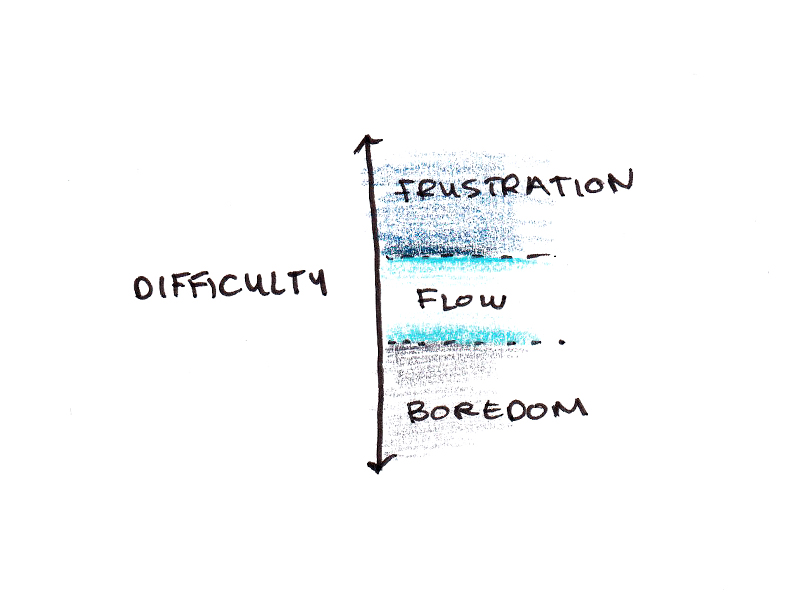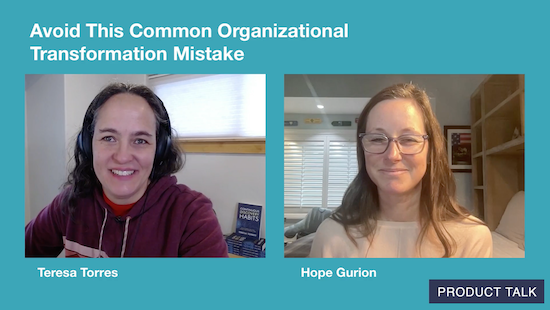What to do when no one wants to work with you
Sometimes, being a leader means making tough calls—ones that aren’t popular, and sometimes even get misunderstood. You’ve probably heard the saying, “If everyone likes you, you’re not really leading.” Fair enough. But what do you do when you hear that no one wants to work with you? Maybe it comes up in passing from a colleague, or maybe it hits harder in a 360 review. Either way, that kind of feedback can sting. It’s that gut-punch moment where you think, Wait . . . what? You’ve been putting in the work, prioritizing the team (at least in your mind), but somehow people aren’t seeing it. They don’t get the pressure you’re under, the decisions you’ve had to make, or why things played out the way they did. Here’s the hard truth: Perception is reality. You might feel like you’re doing everything right, but if your team feels disconnected or frustrated, their experience is what matters most. It’s time to pause, reflect, and figure out how things veered off course. No, it’s not fair. And no, you can’t fix it overnight. But you can make a plan to rebuild trust, reconnect with your team, and start turning things around—one step at a time. Get the data Yeah, this part’s going to be uncomfortable—but if you’ve heard that no one wants to work with you, it’s time to figure out why. You’ve got a couple of options. If you haven’t already done a 360 review, that’s a good place to start. Or you can reach out to a trusted advisor or mentor and ask for some honest feedback. One thing you don’t want to do? March straight over to your team and start digging for answers. That’ll likely come off as defensive—or worse, accusatory—and it won’t help your case. Instead, talk to someone outside the situation. Ideally, someone who knows you well but isn’t directly impacted by your leadership style. You want perspective, not more tension. I worked with one client who’s a strong, passionate leader—but sometimes that passion got the best of him. For instance, when his team would present him with ideas, my client would shout them down if he thought those ideas wouldn’t work. His team felt overwhelmed, and eventually no one wanted to work with him. My client wasn’t aware of the pattern and had no idea his team felt so discouraged. His 360 revealed to him how much his reactions were demoralizing his team; my client learned to soften his delivery, slow down, and listen more. Say sorry Before you can really move forward, you’ve got to clean up some of the mess behind you. That means taking a hard look at the feedback you got and asking yourself: To whom do I owe an apology? You don’t need to deliver a grand speech or make it weird—just keep it simple and sincere. Something like: “Eric, I’m sorry for how I’ve handled things in the past. I lost my cool and yelled, and I know that wasn’t okay. I hope we can move forward and focus on doing great work together.” That’s it. One apology, no over-explaining, no revisiting it later. Say it, mean it, and then move on. The goal isn’t to dwell—it’s to rebuild. Create a plan for moving forward After you’ve gathered data and said sorry to folks, it’s time to develop a structured, daily plan for how you’ll treat your teammates. Here are some ideas for elements to include in that plan, which you can refine based on your specific needs: Say “good morning” every day. On Mondays, ask how your team members’ weekends were. Ahead of difficult conversations, set aside planning time. Practice the interaction so you aren’t left winging it (that’s a recipe for saying something you’ll later regret). “Good is good enough”—remind yourself of this maxim. Rather than shoot for perfect, identify what is 80%, or “good enough.” Write down what this looks like for your particular projects, as well as how you’ll reward your team for a job well done. If you have an upcoming meeting with peers who trigger you to yell and be disrespectful, create a plan for how you’ll mitigate that impulse (for example, “I will take three deep breaths before responding to Alex”). Plan to share a “thank you” and “good job” to someone at least two times a week. Don’t be afraid to write down the details of the plan, no matter how trivial they may seem. Getting a plan in writing means you’re more likely to follow through. Be consistent If you’re trying to turn over a new leaf as a manager, just know—your team is going to be cautious at first. They’ll be watching to see if this is the real deal or just a phase. One offhand comment or outburst and they’ll be thinking, “Yep, there it is. Knew it wouldn’t last.” It’s not because they’re rooting against you—it’s because they’ve been burned before. That’s why it’s so important to make sure your actions match your words. If you say you’re changing but then fall back into old habits, it creates confusion and makes people feel unsafe. So take the time to prepare—especially for tough moments. Got a difficult conversation coming up?

Sometimes, being a leader means making tough calls—ones that aren’t popular, and sometimes even get misunderstood. You’ve probably heard the saying, “If everyone likes you, you’re not really leading.” Fair enough. But what do you do when you hear that no one wants to work with you?
Maybe it comes up in passing from a colleague, or maybe it hits harder in a 360 review. Either way, that kind of feedback can sting. It’s that gut-punch moment where you think, Wait . . . what? You’ve been putting in the work, prioritizing the team (at least in your mind), but somehow people aren’t seeing it. They don’t get the pressure you’re under, the decisions you’ve had to make, or why things played out the way they did.
Here’s the hard truth: Perception is reality. You might feel like you’re doing everything right, but if your team feels disconnected or frustrated, their experience is what matters most. It’s time to pause, reflect, and figure out how things veered off course.
No, it’s not fair. And no, you can’t fix it overnight. But you can make a plan to rebuild trust, reconnect with your team, and start turning things around—one step at a time.
Get the data
Yeah, this part’s going to be uncomfortable—but if you’ve heard that no one wants to work with you, it’s time to figure out why. You’ve got a couple of options. If you haven’t already done a 360 review, that’s a good place to start. Or you can reach out to a trusted advisor or mentor and ask for some honest feedback.
One thing you don’t want to do? March straight over to your team and start digging for answers. That’ll likely come off as defensive—or worse, accusatory—and it won’t help your case. Instead, talk to someone outside the situation. Ideally, someone who knows you well but isn’t directly impacted by your leadership style. You want perspective, not more tension.
I worked with one client who’s a strong, passionate leader—but sometimes that passion got the best of him. For instance, when his team would present him with ideas, my client would shout them down if he thought those ideas wouldn’t work. His team felt overwhelmed, and eventually no one wanted to work with him. My client wasn’t aware of the pattern and had no idea his team felt so discouraged. His 360 revealed to him how much his reactions were demoralizing his team; my client learned to soften his delivery, slow down, and listen more.
Say sorry
Before you can really move forward, you’ve got to clean up some of the mess behind you. That means taking a hard look at the feedback you got and asking yourself: To whom do I owe an apology? You don’t need to deliver a grand speech or make it weird—just keep it simple and sincere.
Something like: “Eric, I’m sorry for how I’ve handled things in the past. I lost my cool and yelled, and I know that wasn’t okay. I hope we can move forward and focus on doing great work together.”
That’s it. One apology, no over-explaining, no revisiting it later. Say it, mean it, and then move on. The goal isn’t to dwell—it’s to rebuild.
Create a plan for moving forward
After you’ve gathered data and said sorry to folks, it’s time to develop a structured, daily plan for how you’ll treat your teammates. Here are some ideas for elements to include in that plan, which you can refine based on your specific needs:
- Say “good morning” every day. On Mondays, ask how your team members’ weekends were.
- Ahead of difficult conversations, set aside planning time. Practice the interaction so you aren’t left winging it (that’s a recipe for saying something you’ll later regret).
- “Good is good enough”—remind yourself of this maxim. Rather than shoot for perfect, identify what is 80%, or “good enough.” Write down what this looks like for your particular projects, as well as how you’ll reward your team for a job well done.
- If you have an upcoming meeting with peers who trigger you to yell and be disrespectful, create a plan for how you’ll mitigate that impulse (for example, “I will take three deep breaths before responding to Alex”).
- Plan to share a “thank you” and “good job” to someone at least two times a week.
Don’t be afraid to write down the details of the plan, no matter how trivial they may seem. Getting a plan in writing means you’re more likely to follow through.
Be consistent
If you’re trying to turn over a new leaf as a manager, just know—your team is going to be cautious at first. They’ll be watching to see if this is the real deal or just a phase. One offhand comment or outburst and they’ll be thinking, “Yep, there it is. Knew it wouldn’t last.” It’s not because they’re rooting against you—it’s because they’ve been burned before.
That’s why it’s so important to make sure your actions match your words. If you say you’re changing but then fall back into old habits, it creates confusion and makes people feel unsafe. So take the time to prepare—especially for tough moments. Got a difficult conversation coming up? Map it out first. Think through what you want to say and how you want to say it. Yes, it’s more work upfront. But it helps lay the groundwork for real trust—and that’s what will make your new leadership style stick. Just remember: This is a long game, not a quick fix.
Playing the long game is difficult when you want a quick win. I worked with one client who wanted things with her team to turn around right away. However, changing a behavior is never easy; this client had to continually focus on and practice a new way of speaking to her team. My client was frustrated with the amount of effort she had to put toward this new communication style. When she had slipups and reverted back to her old style, she felt as if she were starting from square one each time. I continually reminded this client that change takes time. She had many conversations with her manager in which she shared her management plan and the results she was getting. The manager served as a support system to my client as she implemented the changes.
It’s hard to hear that no one wants to work with you, but you can turn the ship around. Remember that your team members are people first. Say “sorry” where you need to, treat people with respect, and make a concrete plan to be less reactive moving forward.





































































































![Building A Digital PR Strategy: 10 Essential Steps for Beginners [With Examples]](https://buzzsumo.com/wp-content/uploads/2023/09/Building-A-Digital-PR-Strategy-10-Essential-Steps-for-Beginners-With-Examples-bblog-masthead.jpg)





![How One Brand Solved the Marketing Attribution Puzzle [Video]](https://contentmarketinginstitute.com/wp-content/uploads/2025/03/marketing-attribution-model-600x338.png?#)
































